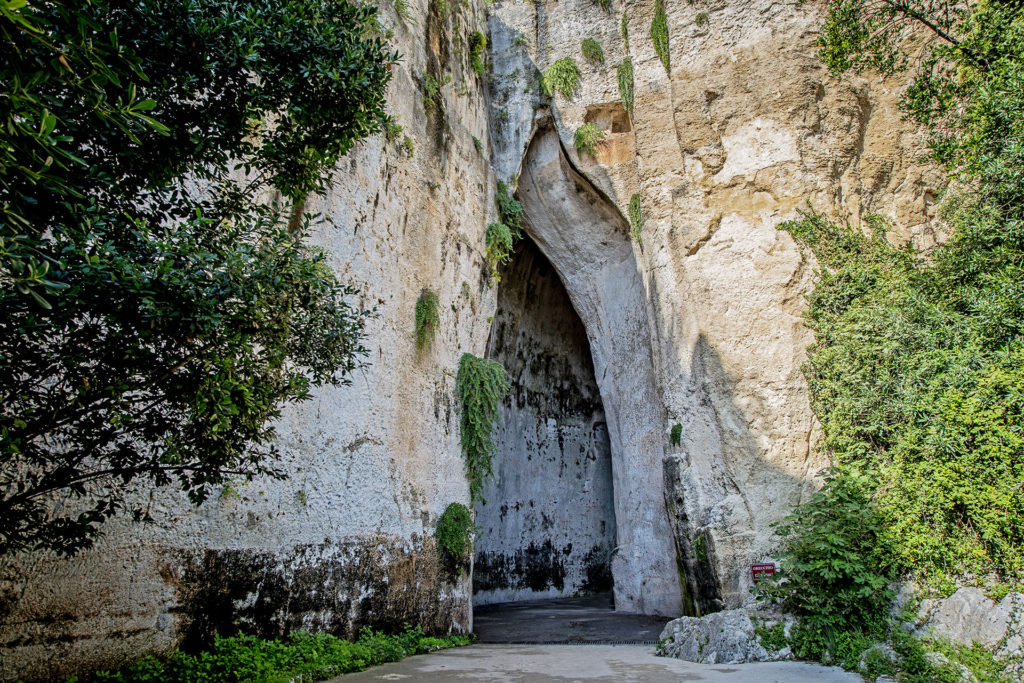The Ear of Dionysius, in the ancient Latomia del Paradiso, is an artificial cave around twenty metres high, carved into the limestone rock. Its depth reaches seventy metres, running internally in the shape of an “S”, while the sinuous walls converge upwards in an
ogival arch
.

It is said that its name was thought of by Caravaggio, who, when he visited the cave during his stay in Syracuse noticed its resemblance to the shape of an auricle.
The name also alludes to the extraordinary acoustic qualities of the quarry, which amplifies the slightest sound up to sixteen times, as also testified by the painter
Jean-Pierre Houël
, who in his meticulous descriptions mentioned the exceptional acoustics of this natural cave, densely frequented also by players and musicians who performed their rehearsals here, playing the horn and beating drums. According to reconstructions by the Siceliot writer Diodorus Siculus, the tyrant Dionysius allegedly locked up the poet
Philoxenus of Cythera
in this space or in the nearby “
Grotta dei Cordari
” on the pretext that he did not appreciate the tyrant’s literary works.
The particular shape of the Ear of Dionysius, combined with the half-light and its acoustic properties, has contributed to bestowing the site with an air of mystery.
In the complex of the Latomia del Paradiso there is also the Grotta dei Cordari, its name given by the centuries of use by rope makers who found it an ideal place to work, thanks to the high levels of humidity inside.
The Grotta dei Cordari has been famous since ancient times and many travellers have depicted it in their drawings and lithographs. Among the most significant paintings from a historical point of view is the watercolour on paper by
Francesco Paolo Priolo
from 1867, in which the evocative architecture of the cave is used as a background to
St. Paul's sermon
.